From Mississippi Medicine: Blistering rates of physician burnout ignite search for answers
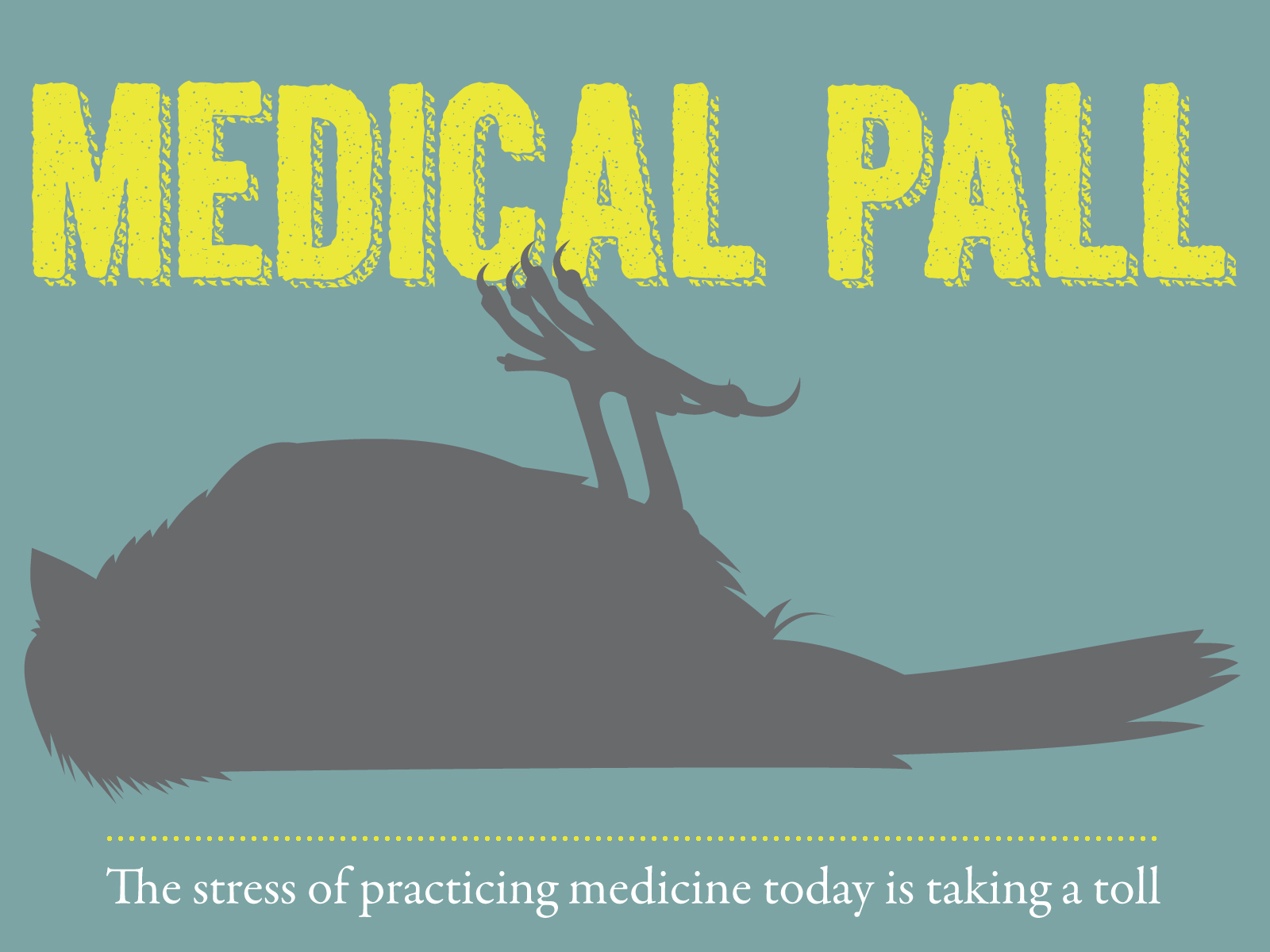
Published in News Stories on August 01, 2016
(Editor's Note: This article was first published in Mississippi Medicine, the alumni magazine of the University of Mississippi School of Medicine.)

We're like the canaries in the coal mine. For our patients' safety, there needs to be a revolution in medicine.
Dr. Luke Lampton,
Family Medicine physician
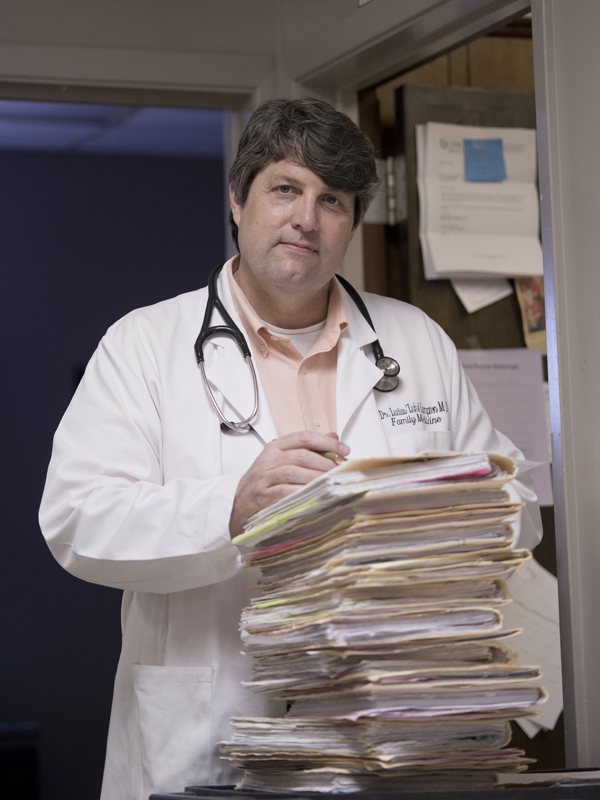
Lampton
The cost of operating Dr. Luke Lampton's family medicine clinic in Magnolia has doubled or tripled since 1999, he said, but his passion for medicine has paid an even higher price.
“Even after hiring a nurse practitioner,” Lampton said, “we're spending less time with patients and more on a bureaucratic system of measures that has nothing to do with saving peoples' lives.”
As chair of the Mississippi State Board of Health and editor of the Journal of the Mississippi State Medical Association, Lampton mingles with enough physicians to know that many are overwhelmed by a system in which the joy of practicing medicine is slowly dripping away.
“Physicians have a sense of powerlessness,” Lampton said. “People in suits are getting in the way of patient care and they're doing it to save money.”
Physicians aren't the only professionals who endure work-related frustrations and bureaucratic burdens; but to the nation's doctors, the hurdles are now high enough to foster a level of burnout and stress so pervasive it has been labeled a “health-care crisis.”
SUICIDE WATCH
More than 54 percent of physicians in the U.S. reported at least one sign of burnout in a 2014 study released this year by the American Medical Association and the Mayo Clinic.
Even more telling, that percentage has jumped, from 45 percent, since a similar study was conducted three years earlier. Over that period, nearly a dozen specialties registered a bump in burnout of more than 10 percent, including family medicine, up by 11.7, to 63 percent.
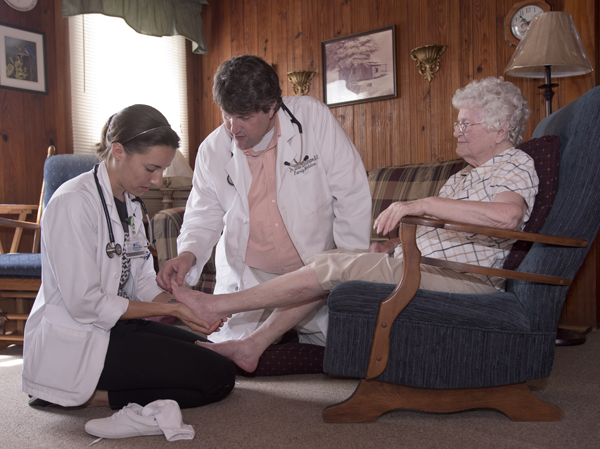
Lampton and Kate Yoder, an M4 from Tulane University, pay a visit to Lillian Lang in her home in Magnolia.
“There are a lot of specialists who are burned out, and we are very burned out,” Lampton said of family medicine physicians.
The upsurge was greatest for urologists, 22.4 (from 41.2 to 63.6); and dermatologists, 24.7 (from 31.8 to 56.5). For all physicians, the rate is even higher than that for the general U.S. working population, the study says. Physicians in mid-career are most likely to encounter burnout.
“The burnout issue exists not only for physicians and residents, but for non-physician providers as well,” said Dr. LouAnn Woodward, UMMC vice chancellor for health affairs and dean of the School of Medicine.
“Increasing pressures for high quality and efficiency put a squeeze on the provider's time with the patient, which is what usually attracts someone to health care in the first place.”
“Stunning” is the word Dr. Jeffrey P. Gold used to describe statistics on stress, burnout, depression and suicide among physicians and other health-care professionals in an essay published in the April issue of Reporter, the flagship news publication of the Association of American Medical Colleges.
Every day at least one physician dies by suicide, reports the American Foundation for Suicide Prevention. Doctors are more than twice as likely to die by suicide, compared to the general population. For medical students, rates of depression exceed the general population's by 15 to 30 percent.
“We have generations of physicians in practice who were never trained in career resiliency, and who are being asked to do things now that they never had to do before,” said Dr. Alan Jones, professor and chair of the Department of Emergency Medicine.
“For the next generation, we need to build medical school curriculum around resilience.”
As for residents, each program at UMMC affords them an education on wellness and impairment, as required by the Accreditation Council for Graduate Medical Education. How that education is presented depends on the individual programs.

Dr. Josh Mann, left, and Jones are co-chairing a Provider Burnout task force.
“But burnout is a relatively new problem in medicine,” Jones said. “I don't believe we realized the impact all these changes in health care would have on us.”
As Gold, the chancellor of the University of Nebraska Medical Center, wrote in the AAMC Reporter, it all amounts to “the greatest health care crisis American physicians and other health professionals face today ….”
And, when physicians suffer, their patients suffer, said Lampton, a 1993 graduate of UMMC's School of Medicine.
“We're like the canaries in the coal mine. For our patients' safety, there needs to be a revolution in medicine.”
IMBALANCING ACT
The revolution is about time, which Lampton says is devoured by the mandates of electronic health records, at the expense of a physician's personal touch.
“Physicians should demand that patient care be the center of their practice,” he said, “instead of jumping through administrative hoops.”
Digital record-keeping is designed to, among other things, give providers more complete information about their patients and to deliver it faster.
This year, the Mississippi Division of Medicaid began exchanging patient information in real time with Epic, the electronic records system adopted in 2012 by the state's largest provider of Medicaid care to patients: UMMC.

“Our new medical records system is one of the best things the Medical Center has done,” said Dr. Kimberly Crowder, chair of the Department of Ophthalmology, “but it adds to the stress. You have to see the same number of patients, but there's more accountability.”
Lampton is less sanguine about EHR.
“Computer systems on airplanes help a pilot be a better pilot and protect passengers,” he said. “Computers for physicians in our clinics and hospitals are built for billing.
“The potential of computers is massive; in another decade they may help us take care of patients; but right now they're still in their awkward teenage years, and they're putting up barriers that paper never did.”
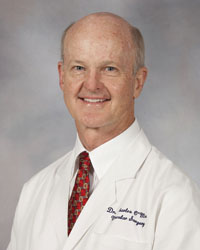
O'Mara
The adoption of EHRs isn't the only burnout combustible. The riddle of work/life “balance” may hark back to Hippocrates. Today, there is a pushback to try to equalize the scales, said Dr. Charles O'Mara, professor of surgery and associate vice chancellor for clinical affairs.
“The lack of an ability to commit to family or hobbies can contribute to burnout. Those outside relationships are extremely important to anybody. Younger physicians in particular understand that life means more than spending 90 hours at the hospital.
“They have expectations of a lifestyle balance that older physicians did not have.”
But it's not necessarily a “balance,” said Dr. Molly Clark, associate professor and fellowship director in the Department of Family Medicine, licensed psychologist, and mother of two school-aged children.
“I did choose a specialty and a role that allow for a lot of autonomy. But, with two kids, having balance depends on a joint effort between me and my husband.
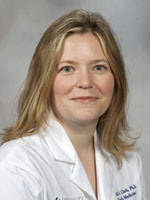
Clark
“Wherever you work, there will be difficulties and stressors. If it's something you can't change, then you have to learn to cope with it or leave that system. If you can change it, then work toward changing it. But, as for work-life balance, I don't think it's possible to have it all at any given time at work and in your personal life. This goes for women and men.”
For men and women, the stressors are similar, said Crowder, the mother of three young children.
“But during residency, females with families may feel even more guilt about time away from them. You hardly ever control your own hours.
“Some people might thrive on attending another late meeting, but, personally, I'd rather devote that hour to going to see my son's baseball game.
“Thankfully, I'm in a specialty that tends to be on the higher end of the non-burnout spectrum” [ophthalmology burnout rate: under 50 percent].
“I've told my residents that ophthalmologists tend to be happy people,” Crowder said. “We get to have relationships with our patients, and I believe that contributes to our well-being. The core of why I became a physician is still there: making things better for someone.
“That continuity with your patients is what you envision when you're thinking about becoming a physician.”
Continuity is absent for the No. 1 burned-out specialty: emergency medicine. “It always tops the list,” said Jones, who has led UMMC's Emergency Department since 2013.
“Emergency medicine is physically and emotionally taxing. You're dealing sometimes with difficult patients; intoxicated patients. Children who are injured or killed.
“That's different from oncologists, for instance, who get to know their patients over time. But, in the end, you can have the same problem, which is a patient's death.”
DISTRESS TEST
Beyond a vexing technology and work/life imbalance, accelerators of burnout and stress include government regulations, loss of autonomy and declines in physician reimbursement.
“All of us have stress,” said Dr. Patrick Smith, UMMC professor of family medicine, chief faculty affairs officer and a clinical psychologist. The question is: Is it low-level stress (eustress) or distress?

Smith
For that, psychologists turn to the Maslach Burnout Inventory, which considers three subscale measures: emotional exhaustion, depersonalization and personal accomplishment (effectiveness).
“Excitement or low levels of anxiety can help improve performance,” Smith said. But, as the so-called Yerkes-Dodson Law states, with high levels, performance plummets.
To understand why stress is most distressing for modern-day physicians, Smith said, “Go to the money.”
First of all, it costs more than ever to train a doctor. “People are coming out of medical school with the equivalent of a mortgage - without a house to show for it,” Smith said.
Once in practice, they face a species of stress not encountered in the wilds of many other professions.
“When a physician looks into a patient's eyes and sees the fear, knowing they're expected to provide answers, that is difficult, that is a heavy responsibility, and this happens every day,” Clark said. “We see very ill people all the time. In health care, not everyone experiences death and serious illness as much as we do.”
Those traditional, age-old pressures have been compounded of late by the onus of reeling in costs, Smith said.
“Health-care expenditures in this country will represent close to 21 percent of the Gross Domestic Product by 2021, so they become a target.”
At academic medical centers like UMMC, Smith said, where about 40 percent of the patients are uninsured or underinsured, cutting costs is a tall order. It becomes taller in Mississippi when you consider Medicaid.
“Medicaid was not expanded here, under the Affordable Care Act [ACA or Obamacare]. So we're providing a lot of unreimbursed care.”
Physicians have to see more patients to make up for a decline in revenue, but have less time for each one - all while being press-ganged to improve health outcomes.
Or else, their compensation falls.
Then, there's Medicare revenue, sapped by baseline reductions under the ACA.
Finally, many physicians find they cannot afford to be independent any longer, Smith said, “so they become employees of a health system.
“All these changes are contributing to burnout.”
SWING STATE
The issue boils down to mental health.
For its part, UMMC has a contract with Lifesynch to provide 24/7 access to professional counselors; there are also provisions for addiction treatment.
But these programs apply to all employees and members of their households, not exclusively to doctors, who are not known for looking after themselves.
“We have this perception that taking time to manage stress and burnout is synonymous with weakness,” Clark said. But, as rest can avert injuries for athletes, she said, the “restorative” powers of wellness can prevent burnout for physicians. “We need to take the time to take better care of ourselves.”
Collective burnout will worsen if unaddressed, especially when the physician shortage is expected to exceed 90,000 by 2020.
“If physicians don't have the resiliency to maintain longevity, they retire earlier,” Jones said. “That means fewer physicians, who become even more overworked and overrun with patients.
“The pendulum has swung very far toward making physicians do things they value less than patient care.
“It's inevitable that the pendulum will have to swing back and give them a greater voice, or there will be more and more disgruntled physicians who are unwilling to stick it out.”
CORNBREAD AND TEA
How disgruntled are UMMC's physicians? No burnout survey, as such, exists, but there is the Comprehensive Faculty Development Needs Assessment conducted from April to December in 2015.

Skinner
Tackling burnout did register as a need, if not a top priority, said Vickie Skinner, project manager for faculty affairs.
“But I believe strongly that if we deal with the four issues faculty identified as top priorities, we will also address burnout and work/life balance,” she said.
Those priorities:
1. Mentorship - “which can help identify potential burnout early, and manage it,” Skinner said.
2. Promotion/tenure - meaning evenhanded opportunities for advancement, with clearly stated guidelines.
3. Collaboration - that is, more of it across departments and schools.
4. Research and scholarly support - particularly, more protected time to engage in these activities, a requirement for faculty promotions.
The findings made it to the Council of Deans and Woodward, who responded by greenlighting the creation of a Provider Burnout Task Force, chaired by Jones and Dr. Joshua Mann, professor and chair of the Department of Preventive Medicine.
“The issue of physician burnout will get a lot of attention and we want to come up with meaningful recommendations,” Mann said. “I believe it will be a one-year project, at least,” he said of the task force, which met for the first time in May.
“Dr. Woodward wants UMMC to get a handle on this, and we hope to develop recommendations that will apply to nurse practitioners and other providers, as well as physicians.”
O'Mara believes enabling physicians to avoid career-ending burnout means attacking the issue internally, with more wellness programs; and externally, “with less onerous regulations, and electronic health records that are easier to use,” he said.
Externally, there is already the Mississippi Professionals Health Program (www.MSPHP.com), a subsidiary of the MSMA, which helps physicians respond to distress and recover from various forms of impairment, including addiction.
In the January issue of the JMSMA, Dr. Daniel Edney, MSMA president, announced that Mississippi has been selected to serve as a pilot project state for the AMA's new STEPS Forward program, aimed at helping physicians combat stress and “reignite professional fulfillment in their work.”
Lampton, for one, is taking his own steps to do that.

As with many physicians, Lampton says that spending time with patients like Tommie Beck of Magnolia is where he finds joy in the practice of medicine.
“I still believe medicine is the most important profession on the planet,” he said. “Physicians save lives every day. So it's not only important to save our profession, but also to elevate it.
“We have to find a way to restore that passion for taking care of patients, to remember why we became doctors in the first place.”
For him, the answer lies in “reinventing his practice.” He has taken on nursing home and hospice care, which involves home visits - echoes of a Norman Rockwellian age of house calls and country doctors.
“It's talking to people about their lives,” Lampton said. “It's sitting down with them at the kitchen table, being served a glass of sweet tea with cornbread and field peas in a skillet on the stove. It's having time to let them know I care about them. It's listening to their hearts. These are the things that restore me.”

Burnout rates topping 60%, by specialty
• Emergency medicine (70-plus%)
• Urology
• Physical medicine and rehabilitation
• Family medicine
• Radiology
21st century stressors for physicians in academic medicine
• Increased workload
• Pressure to keep up with an ever-larger knowledge base
• Changing reimbursement guidelines from insurers
• More frequent legislative intervention in public health issues, such as vaccinations and abortion
• More layers of accreditation
• More stringent requirements from the Joint Commission
• Stricter standards from the Institutional Review Board regarding human research
• Greater emphasis on oversight (compliance)
• Technology (electronic health records)
• Lack of resources, including equipment, space
• Hidden costs, such as inadequate work/life balance (inability to spend more time with loved ones, etc.)
Source:
Dr. Patrick Smith, UMMC
Top burnout rate increases by specialty
24.7% Dermatology
(31.8% of physicians reported burnout in 2011, vs. 56.5% in 2014)
22.4% Urology
(41.2% vs. 63.6%)
15.9% Physical medicine and rehabilitation
(47.4% vs. 63.3%)
14.9% Pathology
(37.6% vs. 52.5%)
13.7% Radiology
(47.7% vs. 61.4%)
11.7% Family medicine
(51.3% vs. 63%)
11.3% Orthopedic surgery
(48.3% vs. 59.6%)
11% General pediatrics
(35.3% vs. 46.3%)
10.3% General surgery subspecialties
(42.4% vs. 52.7%)
Source:
American Medical Association; for the complete list, go to` www.ama-assn.org/ama/ama-wire/post/specialties-highest-burnout-rates, which features the “7 signs of burnout” and how to prevent them


